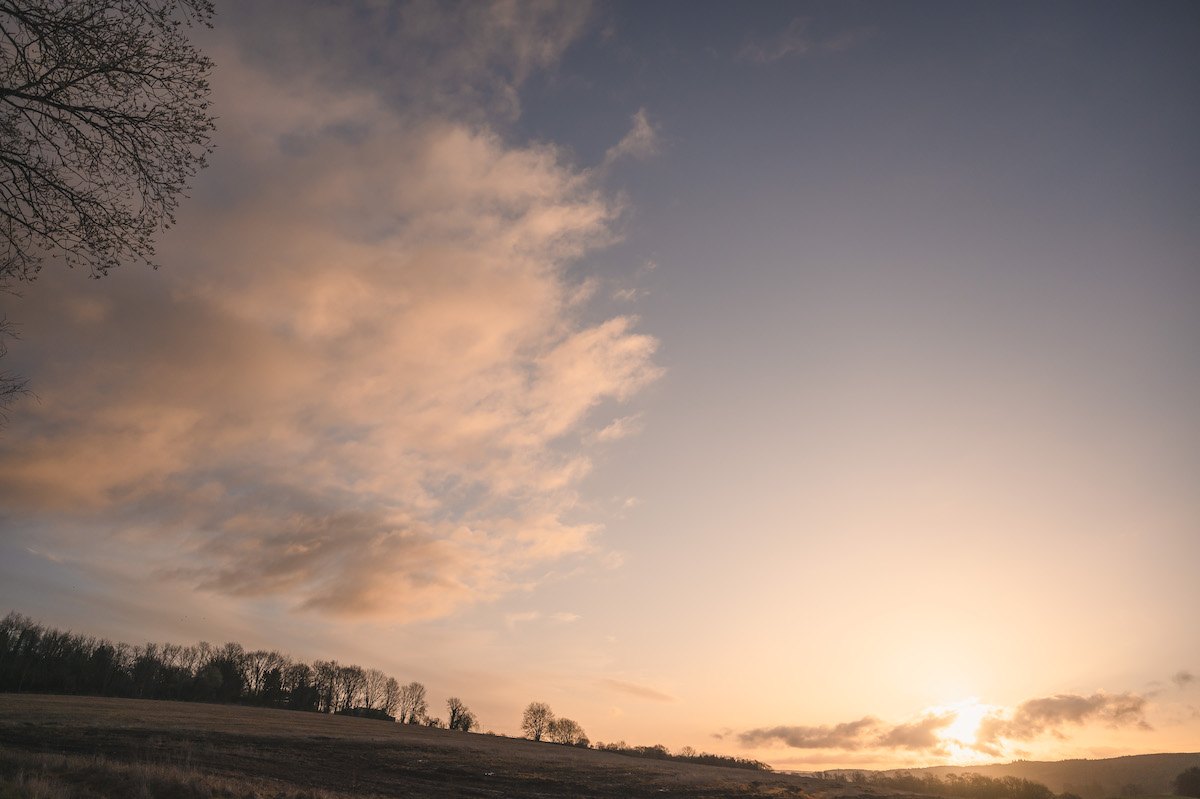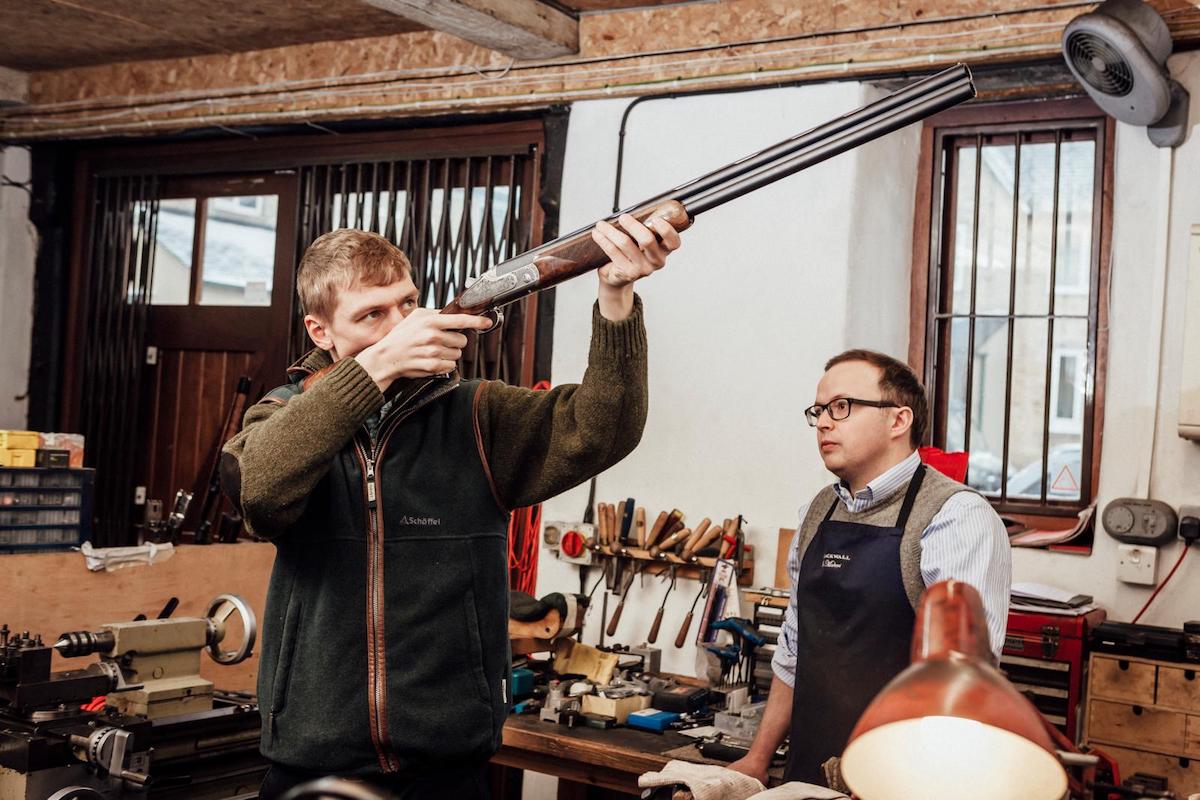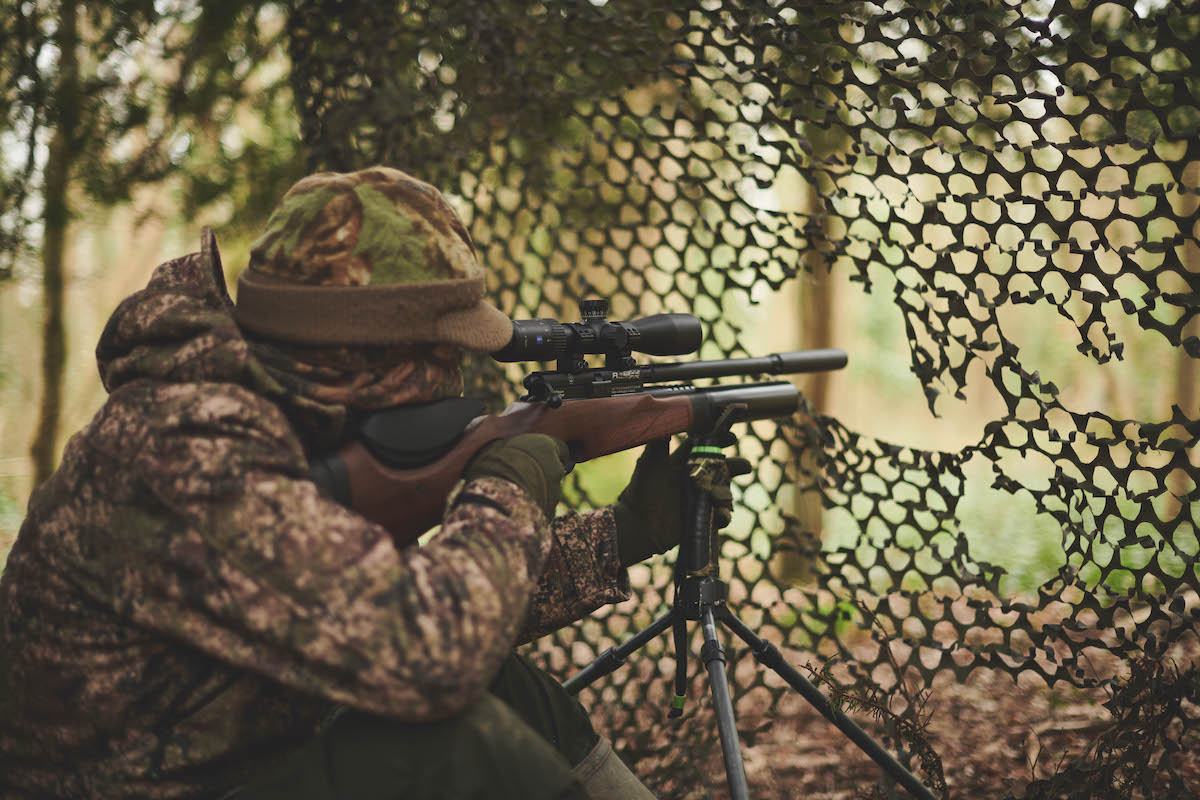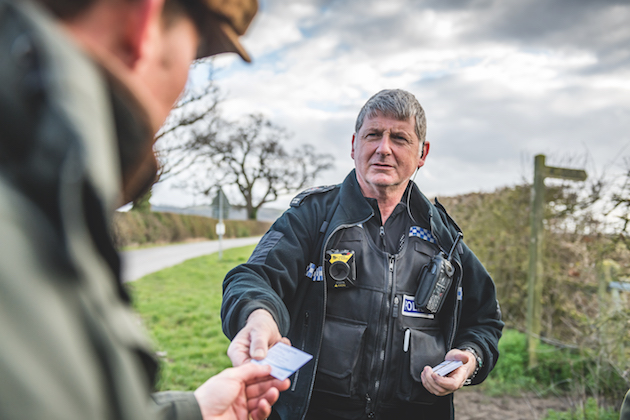My first time with a single-shot rifle
Chris Dalton tries out a single-shot rifle for the first time, finding in its limitations a primal sense, almost like going back to the airgun of his teenager days

Sun rises over the woodland as Chris prepares for the stalk
The use of a single-shot rifle in the stalking field is not something I had given much thought to, but that changed after a conversation with someone in the gun trade who mentioned that the sale of such rifles was on the increase. I do know of a few stalkers who use them but I have never handled one.
My curiosity was aroused. After the subsequent and inevitable discussions over a post-dinner dram on the use of the single-shot option for deer, I fired an exploratory email over to those awfully nice folk at Viking to ask about the chances of getting my hands on one for a roebuck stalk.
My request was clearly well received and a few days later a Merkel K5 arrived at Garryloop HQ. What a stunning little rifle it was; it had the most beautifully grained, shaped and oiled wooden stock. In the second box was a compact Leopold VX-3HD 1.5-5 x 20 scope along with a Merkel Helix sound moderator.

Chris sets the Merkel K5 on his Viper-Flex quad sticks for a shot in a kneeling position
I took some time to handle and appreciate the rifle; it’s very light and compact, and beautifully balanced, but it felt so different to any other rifle I had ever used. The lever that opened the barrel was very familiar, but from my shotguns and not a rifle. The fore-end could also be released from the barrel in the same way as when breaking a shotgun down for storage or cleaning. Opening the breech then snapping it shut, I found myself automatically lifting the rifle to my shoulder and swinging it along the line of the window as if it were an imaginary crossing pheasant.

Loading the rifle with a single .270 Barnes TTSX 130-gr non-lead round
The single-shot rifle in depth
The single-shot rifle was threaded but had fitted iron sights, so I removed the front sight and screwed on the moderator before laying the rifle on the gun-cleaning rack, ready to fit the scope mounts. Now its sleek looks had been spoiled with the addition of the moderator, I laid it down and studied it. Could I use this rifle with iron sights only? There was something very primal about the thought of this, almost pure in a sense. I confess to battling with myself; should I use it in this way? But why not.
From the age of 14, all I ever used was an air rifle with iron sights; a cheap — and not very good — scope was a much later addition. My shooting apprenticeship was served on rabbits and sparrows with that air rifle in those days of ignorance and abundance. It is how I learned about marksmanship, the limits of accurate shooting, patience, the importance of knowing your quarry and fieldcraft.

After taking the shot at the buck, Chris removes the spent casing
To get to within 25 yards of rabbits feeding in open grass fields and then to successfully take a head shot teaches you a lot.
So in principle, I decided there really was no issue, provided I was able to be consistently accurate on a standard 4in target on the range. The rifle was supplied in .270, so I was overgunned for close woodland work on roe, but with the addition of some home-loaded 130-gr non-lead TTSX ammunition I was ready.
Initially I set up at 50 yards and was surprised how tight a three-shot group was. As I moved back a further 30 yards, the group opened slightly but was easily within the zone. Now, confident in the accuracy, my only other reservation centred on the ability and speed to deliver a second shot if required in comparison with a more commonly used bolt-action rifle. Having operated as a professional stalking guide for close on 20 years and stalking for much longer than that, I can’t recall many occasions where it would have been a problem.
If I were heading out on a cull stalk, let’s say hindstalking on the open hill, clearly I would not use a single-shot rifle such as this. My father’s words still resonate: use the right tool for the job. I was intending to stalk in woodland and would not take any shot unless I was close. Having reconciled myself with all the above, I was looking forward to getting out into the field.

A group of deer feeding on the field boundary are spotted by Chris through his binoculars
The only downsides of a light rifle in a large calibre with no sound moderator are noise and recoil, but I could live with that just this once. My plan was to stalk some open broadleaf woodland on a small estate close to home. The grounds surround an old castle and it’s a patch I know well.
One old buck, who is getting past his prime, was my chosen target. I have watched him for more than three years; he lies up most days in some rhododendrons along the edge of a small spinney.

Chris decides to use the Merkel’s iron sights only
Advantage
The thermal was left at home; I would rely solely on fieldcraft, binoculars and Zosia, my German shorthaired pointer. This is how I prefer to stalk. The advantage is with the deer when you must get very close to them, even more so when up against a wily old warrior on his home turf. You don’t get to live to his age by being stupid. Identifying my ‘rhody buck’ would be easy, with his distinctive, multipoint, gnarled and malformed head with the large, sloping coronets that were beginning to coalesce. (Read more about perruque heads on deer here.)
I arrived at the ground just as the light was coming up and faced a north-easterly wind, which was bitingly cold. I loaded up and slung the rifle on a makeshift sling over my shoulder, with a few spare rounds carefully stowed in my pocket for easy access if needed. Very carefully and painfully slowly, I headed into the woods, constantly glassing but with a close eye on Zosia. With a stiff breeze blowing directly into us the dog was key and I watched her for the telltale signs that she had sensed deer.
We made slow progress for the first 20 minutes or so without any such reactions. Then her nose went up as she tested the wind — they were here somewhere.

The spent .270 shell – a loud powerful round to fire from the small Merkel K 5 .270
Two followers
I crouched down to peer under the canopy. We were close to an opening and I could see three roe on the opposite edge of the field around 250 yards away — easily identifiable as a doe with two followers. I watched them for a while, tucked in below a raised field drain banking and out of the wind. I glanced at Zosia; she was sitting slightly in front of me, but her attention was now to her right.

Chris sees the group of deer and works out his route to getting into range for a shot
Could this be my buck? It was the right area. I moved slowly forward. We were on a banking above a narrow gully, the other side of which bounded a grass paddock lined with thick rhododendrons. Initially, I couldn’t see anything, but the hound was transfixed, so I waited and watched. You should always trust the dog. A few moments later the rhododendron opposite me burst into action. This was not the wind, as branches crashed up and down.

Zosia, Chris’s German shorthaired pointer, ha an almost sixth sense for deer and will alert him when they are close – you should always trust your dog

Chris lays the old buck among the still-to-open bluebells; he will fight no more battles with the younger bucks, which he would almost certainly have lost
Remarkably easy
I set the single-shot rifle on the sticks in a kneeling position and tracked the movement. It’s remarkably easy with such a compact and light rifle. The thrashing stopped and a few moments later a buck’s head appeared. He looked around, pausing briefly before taking a few paces forward, clearing the cover to survey his domain, no more than 50 yards away. There was no mistaking him, it was definitely my old buck.
A big lad but looking rather tatty as his winter coat was loosening, he would not live long enough for the fox red summer pelage to appear. He fell to my shot with barely a kick. I gathered him up with mixed feelings but also thinking this was his time; he was of an age when he would still feel that he could win the challenges soon to come from bucks he would have bested previously. The younger beasts, however, are now in their heyday and these conflicts would likely not end well for him.
I gathered him up and laid him out among the bluebells. I leaned the unloaded single-shot rifle against an old oak, at the conclusion of a fair contest, a fitting end for an old gladiator.








